Are you struggling to find the ideal customers for your business? Are you wondering why your marketing efforts aren’t paying off? The answer might lie in how well you understand your customers.
Creating the best customer profile isn’t just about guessing or relying on vague assumptions about your audience. It’s about building a detailed, accurate picture of who they are, what they need, and how you can solve their problems.
Here, we’ll show how to craft a customer profile that feels like a cheat code to attract your ideal audience, drive tangible results, and boost sales. Let’s dive in!
Take the best care of your customers with HelpDesk’s free 14-day trial. Join us and bring a better customer experience. 🚀
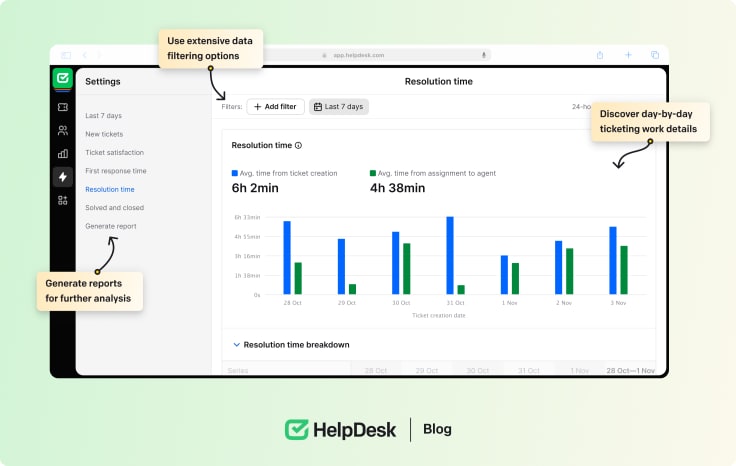
What is customer profiling?
Customer profiling is all about getting to know your customers more deeply. Think of it as painting a vivid picture of who your ideal customer is. It’s not just what they buy but why, what they care about, and how they behave. It’s gathering and analyzing data to understand their needs, preferences, and habits.
Why does it matter? Businesses that understand their customers are 60% more likely to convert leads into loyal buyers. That’s huge! Profiling helps you cut through the noise and focus on high-quality leads. It’s like having a map that shows you exactly where to invest your time and energy for the best returns.
Customer profiling lets you personalize every interaction. You can tailor your marketing messages, recommend products they’ll love, or improve their overall experience.
And customers notice! 80% of people say they’re more likely to buy from a company that offers personalized experiences. So, profiling is necessary if you’re serious about growing your business and keeping customers happy.
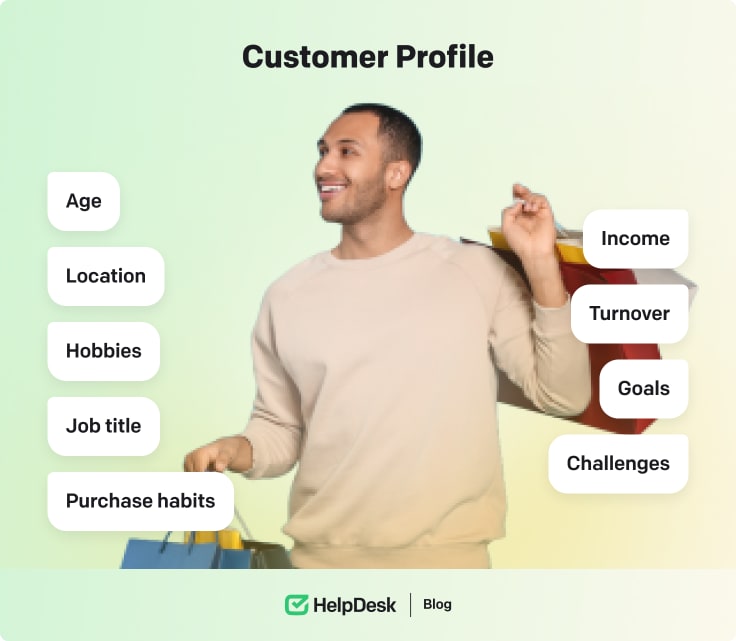
Benefits of creating customer profiles
Creating customer profiles transforms how your business operates.
1. Improve efficiency by reducing silos
Silos are the enemy of a smooth customer experience. When teams work in isolation, vital customer insights often get lost in translation. Customer profiling changes that.
You’re handing every team the same playbook by creating a shared understanding of your ideal customer. Marketing knows who to target, sales know how to pitch, and customer service knows how to keep them happy.
It’s like syncing the gears of a machine. Everything just works better. When teams collaborate seamlessly, efficiency skyrockets and customers notice the difference.
2. Stimulate loyalty through personalized experiences
Nobody likes to feel like just another number. With customer profiles, you can tailor experiences that resonate on a personal level. Whether recommending products that match their preferences or crafting marketing messages that speak directly to their needs, personalization makes customers feel valued.
This isn’t just fluff. Personalized interactions can boost customer loyalty by up to 50%. When customers feel understood and appreciated, they’re more likely to stick around, make repeat purchases, and even become your biggest advocates.
3. Enhance collaboration between teams
Think of customer profiling as the ultimate team player. Collaboration becomes a breeze when customer service, marketing, and sales teams access the same customer insights.
Instead of working in silos, teams can strategize together to create a unified customer experience. For example, the marketing team can craft campaigns based on insights from customer service teams, while the sales team can follow up with leads that are more likely to convert.
The enhanced collaboration streamlines processes and ensures smooth and consistent customer interactions, improving overall business outcomes.
Types of customer data for profiling
When creating a customer profile, not all data is equal. To truly understand your audience, you need a mix of insights beyond surface-level details.

Demographic data
It’s the foundation of your customer profile. Demographic data includes age, gender, job title, income, and education level. It’s understanding “who” your customer is. Are they young professionals starting their careers or seasoned executives with disposable income? Knowing this helps you shape your messaging to match their stage of life and priorities.
Psychographic data
Now, we’re getting into the “why” behind your customer’s decisions. Psychographic data covers values, interests, attitudes, and lifestyle choices. Are they health-conscious? Tech-savvy? Are you passionate about sustainability? These insights let you tap into what truly motivates them. For instance, showcasing your sustainable practices can make a significant impact if your audience values eco-friendly options.
Behavioral data
Actions speak louder than words, right? Behavioral data captures what your customers do — their purchase history, browsing patterns, and even the search queries they use to find you. It’s like having a cheat sheet to predict their next move. For example, if a customer frequently browses a specific category, you can send personalized recommendations or promotions to nudge them toward a purchase.
Geographic data
Finally, geographic data tells you where your customers are located, the languages they speak, and their cultural backgrounds. It’s beneficial for businesses operating in multiple regions. Knowing your customers’ location helps you localize marketing campaigns, adjust pricing strategies, and tailor product offerings to fit regional preferences.
Combining these data types creates a well-rounded customer profile that goes beyond “knowing your audience” to truly understanding them.
Gathering customer feedback and data
If you want to create a killer customer profile, you’ve got to start with accurate and meaningful data. But where do you find it? And how do you gather it without overwhelming yourself or your customers?
Here are some methods and tools to make data collection more straightforward and effective.
Methods for collecting customer feedback
Gathering customer feedback is about listening to your audience and understanding their perspective. Some go-to methods are:
Surveys and questionnaires
It’s a classic for a reason! Surveys are an efficient way to ask specific questions and get clear answers. Tools like Google Forms make creating and sharing surveys easy. Want to know why customers didn’t complete a purchase? Ask them directly in a post-visit survey.
Social media listening
People discuss your brand, competitors, or industry trends on social media. Tools like Hootsuite or Sprout Social help you tune in and gather insights. For example, a recurring complaint about your product could be your next big improvement idea.
Customer reviews and ratings
Reviews are gold. They’re honest, unfiltered feedback telling customers what they love (or hate) about your product. Platforms like Yelp, Google Reviews, or your website can provide actionable insights.
Focus groups and interviews
If you want deeper insights, sit down and talk to your customers. Focus groups and one-on-one interviews let you explore customer experiences in detail. This method may take longer but can reveal motivations and pain points that surveys often miss.
Master feedback management with HelpDesk. Discover strategies that enhance communication and drive growth. 🔥
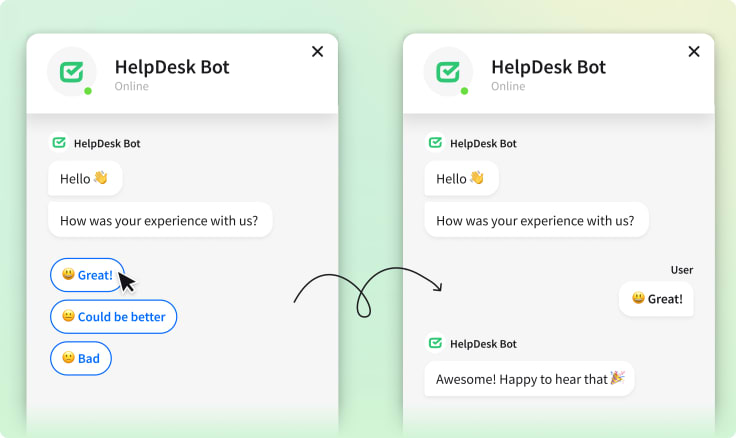
Tools for gathering customer data
Once the feedback is rolling in, you’ll need tools to manage and analyze it. Here are some must-haves:
-
Customer relationship management (CRM) software: CRMs like Salesforce or HubSpot store all your customer data in one place. You can track interactions, monitor purchase history, and identify trends that help shape your customer profile.
-
Marketing automation software: Platforms like Mailchimp do more than just send emails. They collect behavioral data, like email open rates and clicks, helping you understand how customers interact with your marketing.
-
Web analytics tools: Tools like Google Analytics track how customers use your website. What pages do they visit, how long do they stay, and where do they drop off? The behavioral data is invaluable for spotting trends, buyer persona, and optimizing user experiences.
-
Social media analytics tools: Social media platforms often have built-in analytics, but tools like Buffer take it up a notch. They give detailed insights into your audience’s demographics, engagement patterns, and content preferences.
-
HelpDesk: Another essential tool for managing customer support tickets and providing valuable insights into customer behavior through interactions, HelpDesk helps businesses better understand customer needs and pain points by tracking inquiries, responses, and feedback. This data, combined with marketing automation, can lead to more personalized and effective marketing campaigns.
Integrating customer data from multiple sources
Here’s the challenge: Your data likely comes from several sources. Your CRM has customer histories, your marketing tool tracks behavior, and your website analytics reveal browsing habits.
How do you make sense of all these customer data platforms?
-
Use data integration tools. Tools like Zapier can help you connect data from multiple sources. For example, you can integrate your CRM with web analytics and email marketing software to fully understand your customers’ journeys.
-
Create a centralized database: Instead of juggling multiple tools, consider creating a centralized database where all customer data converges. It’ll save time and ensure that your data is consistent and up to date.
-
Analyze holistically: Once your data is integrated, look at it as a whole rather than in silos. A customer’s purchase history might tell one story, but when combined with browsing habits and social media interactions, you get a much richer narrative.
Gathering feedback and data uncovers the human stories behind them. Knowing how your customers think, act, and feel better equips you to meet their needs.
Creating a customer profile
Building a customer profile might sound daunting, but breaking it down step by step makes it much more manageable.
Step 1: Identify customer demographics and behavior
First, you need to gather and analyze your demographic and behavioral data. Demographics like age, gender, job title, income, and education level give you a basic picture of who your customer is.
Then, look deeper into their behavior: What do they buy? How often do they buy? What websites do they visit? By looking for patterns in this data, you can identify common characteristics and behavior that define your ideal customer. These insights are the foundation of your profile.
Step 2: Analyze customer feedback and preferences
Now that you have some complex data, it’s time to hear directly from your customers. Review their feedback and preferences from surveys, reviews, or social media interactions. What are they saying they want? Are there recurring themes in what they like or dislike about your product?
Understanding your customers’ needs and wants is crucial for shaping a personal and relevant profile. For example, if many of your customers mention they want faster delivery, that’s a key preference to include in your profile.
Step 3: Develop a customer journey map
Once you understand your customers’ demographics, behavior, and preferences, it’s time to visualize their entire experience. A customer journey map helps you see the whole picture, from the first time they discover your brand to their post-purchase interactions.
Look at the touchpoints where customers engage with your business, like social media, email, or your website. Are there any customer pain points where they get frustrated or drop off?
Identifying these moments is key to improving and making their experience seamless. It also highlights opportunities to add value, such as offering a helpful resource or a personalized recommendation at the right time.
Combining all these elements gives you a comprehensive customer profile that informs your marketing strategies and helps improve your overall customer experience.
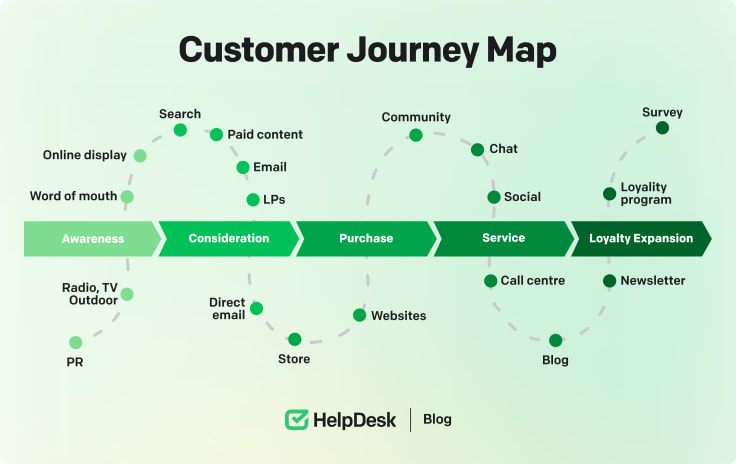
Customer profile examples
Depending on your goals, you can use different profiles to understand better and target your ideal customers.
Basic customer profile
A basic customer profile includes the essentials: demographic data (age, gender, location), contact information, and purchase history. It’s a simple starting point that helps you understand who your customers are and what they’re buying. It is an excellent foundation for segmenting your audience and delving deeper into specific customer groups later.
Scorecard ideal customer profile (ICP)
A scorecard ICP takes things up by adding a scoring system to evaluate potential customers. It assesses how well a lead aligns with your ideal customer. You might score leads based on company size, industry, or buying intent.
It is a valuable tool because it helps sales teams focus their energy on high-quality leads that are most likely to convert. With a scorecard ICP, you can prioritize your efforts and avoid wasting time on less promising prospects.
Buyer persona profile
A buyer persona profile goes beyond demographics to examine the deeper motivations behind a customer’s decision-making. It includes the buyer’s goals, challenges, pain points, and behavior.
The detailed understanding helps you craft targeted marketing campaigns and sales strategies that speak directly to the specific needs of your ideal buyer. For example, if you know a person struggles with time management, your messaging can highlight how your product saves them time.
Using customer profiles to drive business growth
Customer profiles are a powerful tool to drive business growth. They can help you take your customer experience and sales strategies to the next level through:
1. Personalize customer experiences
One of the best ways to make your customers feel valued is through personalization. Using customer profiles, you can deliver tailored experiences across all touchpoints, such as sales and marketing campaigns, conversations, and customer service.
For instance, if you know a customer is interested in a particular product, you can send them targeted emails or offers related to that product, making them feel like you understand their needs.
2. Improve customer service
Customer profiles give you valuable insights into customers’ preferences and pain points. They allow you to proactively address their needs and deliver a personalized service experience.
For example, if you know a customer prefers self-service or wants immediate responses, you can provide them with the tools.
Alternatively, you can prioritize one-on-one support if they need more hands-on assistance. A deep understanding of your customers can turn a good service experience into a great one, fostering long-term relationships.
3. Enhance sales and marketing efforts
Customer profiles also help optimize your sales and marketing strategies. By identifying high-quality leads and understanding their buying behavior, you can prioritize your efforts where they’ll have the most impact.
It leads to better conversion rates and faster sales cycles, ultimately driving revenue growth. With a clear picture of your ideal customer, your sales team can focus on the right prospects, and your marketing team can craft messaging that resonates with the right audience at the right time.
Common mistakes in customer profiling
When creating customer profiles, it’s easy to make mistakes that can throw off your whole strategy. Here are a few common ones to avoid:
-
Insufficient research and data collection: Skipping thorough research and data collection can result in inaccurate profiles that don’t reflect your customers’ needs. It can lead to wasted marketing efforts.
-
Outdated profiles: Customer behavior and preferences change over time. Failure to update your profiles regularly can result in outdated information that no longer aligns with your audience.
-
One-size-fits-all approach: Treating all customers the same can harm your strategy. Without proper segmentation, your marketing will be less effective, and customer experiences will suffer.
Best practices for customer profiling
Creating accurate customer profiles is an ongoing process. Some practices to make sure your customer profiles are always on point are:
-
Use a customer-centric approach: Focus on the customer’s needs, preferences, and pain points. The approach ensures your profiles align with your audience’s values, allowing you to deliver personalized experiences that boost satisfaction.
-
Continuously update and refine profiles: Your customers are constantly evolving, and so should your profiles. Regularly revisit and refine them based on new data to maintain relevance. It helps keep your marketing strategies fresh and compelling.
-
Use technology to streamline profiling: Leverage CRM systems and marketing automation tools to automate data collection and profiling. It makes the process faster and more accurate, reducing manual work and ensuring your profiles stay up-to-date.
-
Create customer segments: Divide your customer base into smaller, more targeted segments. It’ll help you create more detailed and practical profiles for each group, improving engagement.
-
Analyze and act on data: Don’t just collect data — analyze it! Look for patterns and insights to guide your decisions and help you optimize your marketing efforts for new and existing customers.
Creating an ideal customer profile
An ICP is a detailed description of your business’s ideal customer. It includes demographic, behavioral, and firmographic data to help you identify who to target.
The importance of an ICP lies in its ability to help you identify high-quality leads and focus your sales efforts on the customers who are most likely to convert.
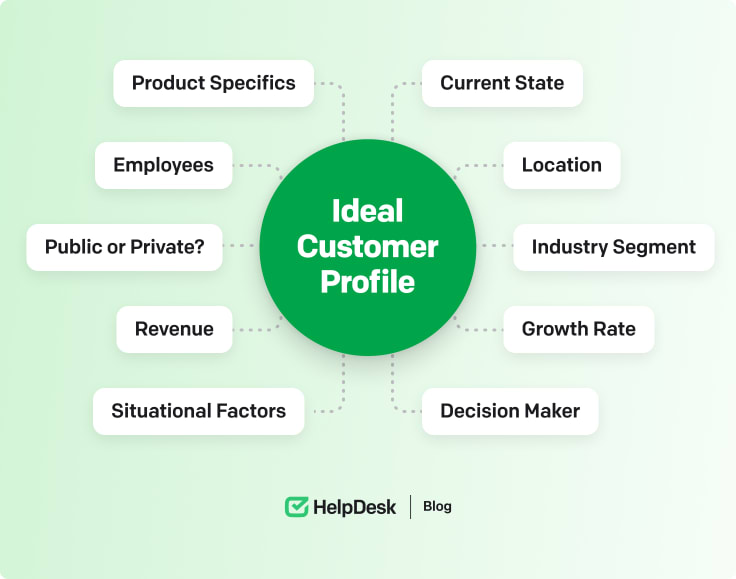
Steps to create an ICP
Creating an ICP isn’t complicated but requires some thought and research. The steps include:
-
Identify the target market: Define the industry or market you want to target. Consider factors like company size, location, or niche. Also, understand the broader needs and challenges of that market.
-
Gather data points: Collect data from customer surveys, interviews, or online behavior. Then, analyze your best customers to find common traits. For additional insights, examine industry reports, trends, and competitor data.
-
Find patterns and trends: Look for recurring characteristics in your ideal customers and identify common challenges, behavior, and goals. Spot trends that can help you predict future buying decisions.
Using an ICP for better lead-scoring
The real power of your ICP comes into play when you use it for lead scoring. By comparing potential customers to your ICP, you can evaluate how closely they align with your ideal profile. It allows you to focus on high-quality leads and prioritize your efforts on prospects most likely to convert.
Your ICP helps you avoid wasting time on leads that are a poor fit and increases your chances of closing deals with the right customers.
Leveraging AI in customer profiling
AI is changing the game when it comes to customer profiling. By analyzing large datasets, AI can help you identify patterns and trends that might not be immediately obvious.
AI can process vast amounts of data quickly, helping uncover hidden insights about your customers. It can analyze everything from purchasing behavior to social media activity, giving you a deeper understanding of what drives your customers.
It can also predict future behavior, like which products a customer will likely buy next or when they may need a follow-up.
Some benefits of AI use include:
-
Improved accuracy and efficiency: AI can process and analyze data much faster than humans, reducing the chances of errors and improving the overall accuracy of your customer profiles.
-
Enhanced customer experiences: With more precise customer profiles, businesses can create highly personalized experiences, strengthening customer loyalty and satisfaction.
-
Increased revenue growth: AI-driven profiling helps boost conversion rates and revenue by targeting the right customers with tailored messaging, making it a valuable investment for any business looking to grow.
Customer profiling for B2B and B2C
Business-to-business (B2B) and business-to-consumer (B2C) strategies differ significantly regarding customer profiling. Understanding these differences helps you create more accurate profiles and drive better marketing outcomes.
For B2B, customer profiles typically focus on firmographic data, such as:
-
Company size
-
Industry
-
Revenue
-
Location
-
Decision-makers within the company
This helps businesses understand the characteristics of their ideal business customer and tailor their sales efforts accordingly.
On the other hand, B2C customer profiles tend to focus more on demographic data, including:
-
Age
-
Gender
-
Income level
-
Education
-
Location
These profiles help businesses understand consumer preferences and needs, allowing for targeted marketing and personalization.
Strategies to create effective B2B and B2C profiles
-
For B2B: Use account-based marketing (ABM) to focus on specific target companies. ABM allows you to create highly personalized strategies for individual businesses, aligning your outreach with their unique challenges and needs.
-
For B2C: Utilize social media and email marketing to reach a broader audience. Analyzing social media behavior and email responses allows you to create profiles based on consumer preferences and drive engagement.
Summary
Creating the best customer profile is about understanding who your customers are, what they need, and how they behave. Gathering key data like demographics, behavior, and preferences enables you to craft detailed profiles that help you deliver personalized experiences and better-targeted marketing campaigns.
Tools like HelpDesk play a vital role in this process by helping you track customer interactions, manage support tickets, and gather feedback. They offer valuable insights into your customers’ pain points and needs. Combining these insights with other data from CRM systems and marketing platforms can create a more complete picture of your ideal customer.
Ultimately, when you understand your customers inside and out, you can deliver exactly what they’re looking for. That’s the key to driving growth, loyalty, and success. So, get started today and create a customer profile to set your business up for long-term success!


